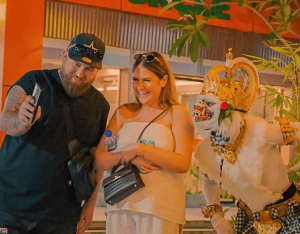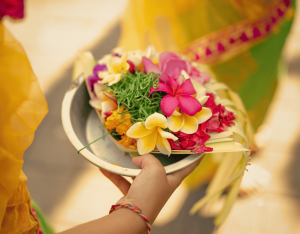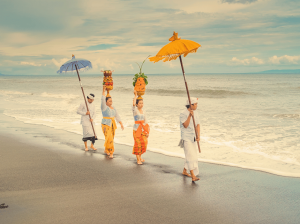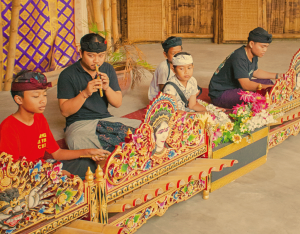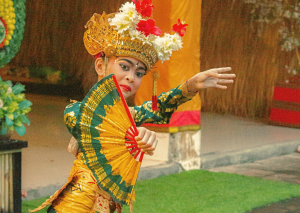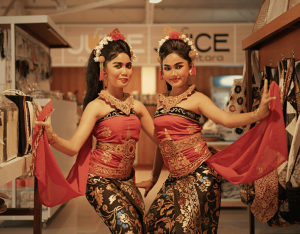The scent of incense drifts through the morning air, gamelan melodies echo from temple courtyards, and dancers move in graceful rhythm beneath tall penjors swaying in the breeze. In Bali, every sound, color, and gesture carries devotion. Here, art is not merely created for display it is lived, prayed, and performed as part of daily life. From dance and sculpture to the simplest flower offering, creativity becomes a form of worship. What makes Bali’s art so deeply spiritual, and how can travelers experience it respectfully?
Harmony Between Art and Ritual in Balinese Life
In Balinese culture, art and ritual are inseparable two sides of the same offering to life itself. Every dance, carving, and melody is rooted in the island’s spiritual philosophy, where sekala (the seen world) and niskala (the unseen) coexist in harmony. Dance performed during temple ceremonies is not entertainment but an act of devotion a moving prayer that connects the community with the divine. The steady rhythm of gamelan accompanies these moments, believed to guide the spirits that visit the temple. Even the intricate carvings on temple walls and the detailed costumes of dancers symbolize protection and purity.
To witness these sacred arts is to glimpse how the Balinese live their faithnot through words, but through beauty in motion. Every performance, every offering, is a living form of prayer.
Ceremonies Every Cultural Traveler Should Witness
For those seeking to experience Bali’s soul, attending a traditional ceremony offers a window into the island’s deepest values. Each ritual expresses the balance between humans, nature, and the divine.
-
Melasti Ceremony – Held before Nyepi, devotees in white walk to the sea to purify both body and spirit—a breathtaking vision of unity and faith.
-
Odalan – The temple’s anniversary, celebrated with days of dance, music, and offerings—a vibrant expression of gratitude.
-
Galungan & Kuningan – Marking the triumph of dharma over adharma, symbolized through joyous processions and family gatherings.
-
Ngaben – The sacred cremation ceremony that releases the soul to continue its journey toward peace and enlightenment.
When attending, travelers are encouraged to observe with reverence wear modest clothing, avoid interrupting rituals, and ask permission before photographing. Witnessing these ceremonies with respect allows one to feel the grace that binds the Balinese community together.
Experiencing Sacred Arts Respectfully
To truly understand Bali’s sacred arts, travelers must not only see them but also feel them through mindful participation and appreciation. Attend performances in venues led by local artists or temple communities. Join a dance or gamelan workshop to learn the meaning behind each movement or rhythm. Supporting local artisans by purchasing handmade crafts or attending community events is another form of respect. It keeps traditions alive and honors those who dedicate their lives to preserving them.
Embrace the Spirit of Bali’s Sacred Arts at Sawelas Nusantara
For travelers wishing to immerse themselves in Bali’s spiritual artistry in one place, Sawelas Nusantara offers a bridge between devotion and discovery.
Each performance is a celebration of sacred art combining traditional dance, live gamelan, and storytelling that echo the rhythm of temple life. More than a show, Sawelas Nusantara provides context and meaning: the gestures, the origins, and the harmony that connect them all. Visitors are invited to not just watch, but to feel to sense the quiet spirituality that flows beneath every movement.
📍 Visit us at Bali Collection, Jl. ITDC Nusa Dua Lot BC, Benoa, South Kuta, Badung, Bali.
📅 Check our Event Schedule and experience Bali’s sacred arts with authenticity and respect.
Discover the heartbeat of Bali through art that prays, moves, and inspires, where culture becomes a journey of the soul.
